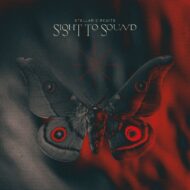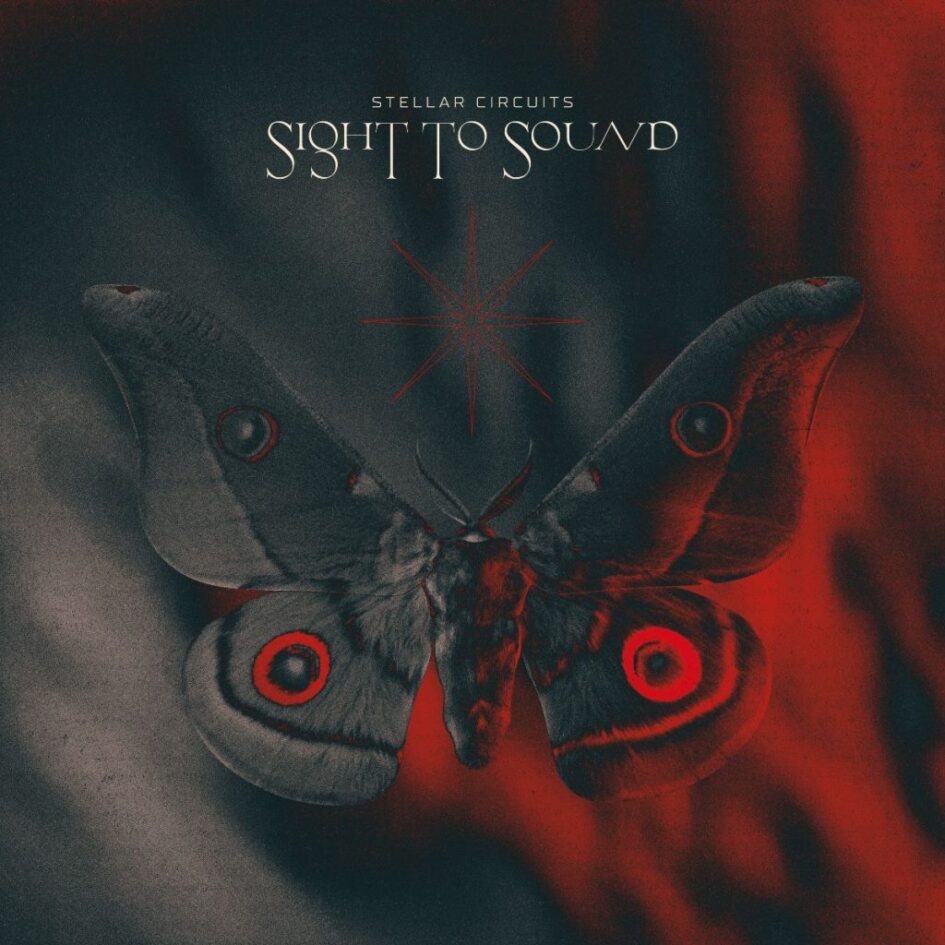 This is part one of a somewhat unexpected mini-series of reviews I’m going to be working on this week and next, that is provisionally (and very much unofficially) titled Out of my Wheelhouse. This is because I have fairly wide-ranging tastes when it comes to metal, but for the most part I prefer my metal to be post, black, folk, industrial or generally weirdly flavoured, with bonus points for combining one or more of the above. Stellar Circuits do indeed come under the peculiar heading, but apart from that they’re solidly outside my usual tastes. So be warned that I am spectacularly ill-prepared to review anything under the prog umbrella. Also, any upcoming jokes about prog fans are (mostly) in jest.
This is part one of a somewhat unexpected mini-series of reviews I’m going to be working on this week and next, that is provisionally (and very much unofficially) titled Out of my Wheelhouse. This is because I have fairly wide-ranging tastes when it comes to metal, but for the most part I prefer my metal to be post, black, folk, industrial or generally weirdly flavoured, with bonus points for combining one or more of the above. Stellar Circuits do indeed come under the peculiar heading, but apart from that they’re solidly outside my usual tastes. So be warned that I am spectacularly ill-prepared to review anything under the prog umbrella. Also, any upcoming jokes about prog fans are (mostly) in jest.
Hailing from Winston-Salem, North Carolina, Stellar Circuits are a prog metal four piece named after the latter part of Timothy Leary’s eight-circuit model of consciousness. I’m assuming they’ve already been through the Larval Circuits phase, which is shame because Larval Circuits would be an absolutely spectacular band name in its own right. That said, if you’re up on your psychedelic psychology, Stellar Circuits works on a level beyond sounding cool – the Larval Circuits come before the stellar ones, and are also known the Terrestrial Circuits, whereas the Stellar Circuits (which humankind hasn’t reached yet in Leary’s philosophy) can also be called the Extra-Terrestrial Circuits. Which is fitting because this album is more of an intergalactic exploratory mission than anything as placid and predictable as staying on a single planet for long enough to get bored. Or maybe you just get to skip the earthbound bits when you’re making a prog album?
Yes, this is technically a prog metal album, but actually there’s so much going on here that I hesitate to put any such single label on it. Over the course of 11 tracks, this album traverses rap-heavy nu-metalish vibes that take me back to a remarkably specific part of the late 90s/early 2000s, to posty dreamscape vibes that could almost be Maybeshewill jamming with Sólstafir on an atypically upbeat day. The band themselves describe their music as visceral, intellectual, groovy, technical and melodious, which is actually pretty accurate, but not in the way I expected. I’m not going to comment on the intellectual bit because I don’t have the lyrics, but apart from that those are all words that can absolutely be thrown about trying to explain Sight to Sound, but it’s not as simple as that. They come at you in waves – it’s like hearing all five concepts pulsating away together, and at any given moment one or two will be at the forefront, before slipping away to let another come out and be seen, but they don’t actually blend together at any point. It’s like trying to keep track of five moving objects at once: you can see them all at once, but you can’t actually focus on more than two of them at any given moment. Or maybe that’s a limitation of earthbound human physiology and Stellar Circuits can indeed focus on five different things at once. Having listened to this album twice, it honestly wouldn’t surprise me all that much at this point.
I’m not going to delve into comparisons for the most part, because I’d hate to attract the attentions of the sort of obsessive prog fans I’ve been talked at by before (especially if I get something egregiously wrong here, which is entirely possible), but one strikingly non-metal one does jump out at me. If you like albums like this one, that take in half a dozen different genres before breakfast, revel in jumping all over the place like a rogue pogo stick, and openly sneer at the idea of being neatly filed away in a particular genre, my favourite non-metal album of all time might also be of interest: Janelle Monáe’s 2010 masterpiece, The ArchAndroid. I’m not going to stand here and say the two are on a par, because literally nothing compares to Monáe’s full-length debut (I’ve looked), but the genre-flitting and general attitude of “I’m not committing to a sound and you can’t make me” has very similar vibes. As does the sheer breadth of styles on display, from hard rock to delicate madrigals (Monáe), and what is essentially rap metal to atmospheric post. That said, the lack of commitment to a consistent sound will be a huge part of the appeal for some, and the exact opposite to others, so your mileage may vary to say the least.
So, getting back to the five-fold musical path that Stellar Circuits are carving out for themselves. Those of you who are after the more visceral, technical end of this album, head for the first half. Witch House (also the first single) is a highlight of this aspect, with hypnotic riffs and some interesting vocoder stuff that sounds not unlike a very angry A Forest of Stars. This along with Pleasure Cruise are where the clean/harsh vocals work best together, along with the mix of gentle melodic and chugging riffs. This combination doesn’t always work across the album as a whole, but when it works, it works pretty well. The first point where the pure melodic comes to the front is the title track, Sight to Sound, which is also notable as probably the most accessible track on the album. It’s also the first of three tracks where the clean vocals and melody are the focus – the harsh vocals are still there, but more as occasional contrast, much like the first few tracks are heavier with clean interludes. This mid-section also has more technical focus, such as Alchemy and Nightlife – Nightlife is a slower track for the most part, but the glittering soundscape behind the lyrics is no less tight and precise for that.
For The Birds is when things slow right down and slip into proggy, melodic post-something with some technical aspects, and honestly, my personal favourite section of the album. Learning To Sleep is – for me – the best thing on the whole album, but that’s almost certainly because it’s the closest to my existing tastes. I’d quite happily have an entire album that sounds like these last three tracks.
Which is ultimately how I think this album’s going to go for a lot of people. Each section of this album is different enough to the rest of it, that I suspect most people will be drawn to a specific part of it, and maybe not connect with the rest of it in the same way. On one hand that can be a good thing, because there’s enough in here that most metal fans will find something to love, but on the other I keep finding myself wondering who the album as a single entity is actually for. I mean, how many metalheads are there out there who actively seek out belligerent nu-metal that twists and turns all over the genre map until it arrives at proggy, technical post?
Answers on a postcard.
7/10 (Ellie)

Leave a Reply